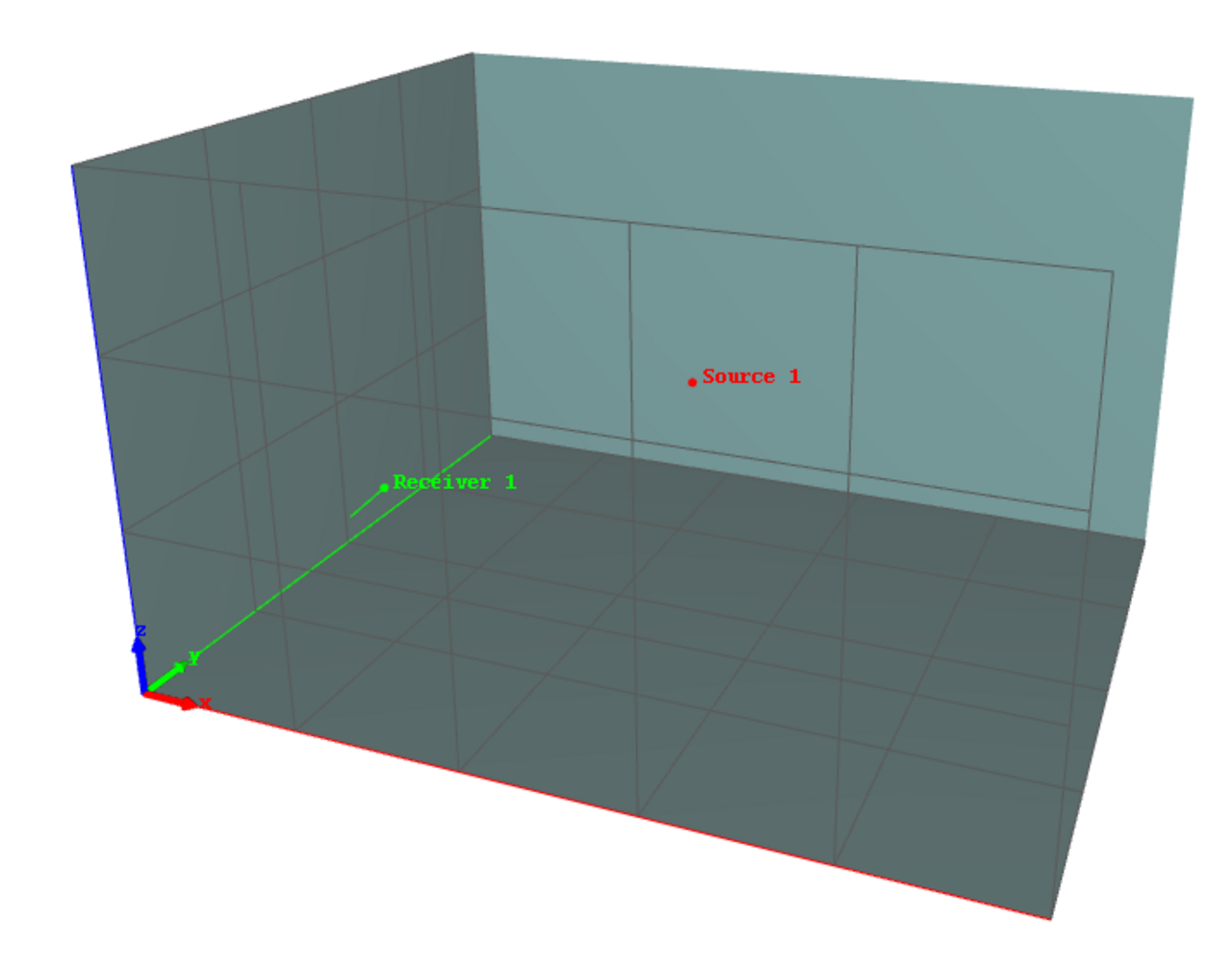All elements of this simulation are licensed under Licence Creative Commons Attribution 4.0 International License.
Quasi-cubic room with diffuse reflection and atmospheric absorption
Description
Academic case: Quasi cubic room (5m x 4m x 3m) with diffuse reflection (100%) and 10% uniform surface absorption, with a single source at the room center (100dB per each frequency band) and a receiver at location (1,1,1).
What is tested?
Comparison between TCR/SPPS/MD simulations in order to verify the implementation of the atmospheric absorption according to ISO 9613-1, and , in particular, the effect of air absorption on reverberation time.
ISO 9613-1:1993 Preview Acoustics -- Attenuation of sound during propagation outdoors -- Part 1: Calculation of the absorption of sound by the atmosphere
CAUTION - The following results present comparisons between numerical simulations carried out with I-Simpa and 'reference' data available in the scientific literature.
- It is difficult to prejudge the concept of 'reference'. The deviation between the simulations and the reference data that can be observed do not necessarily call into question the corresponding simulations but can also be associated with other sources of deviation (modeling assumptions, numerical instabilities, experimental uncertainties, etc.).
- Note also that these comparaisons can also show the limitations of some numerical codes.
Results
The numerical simulations show a very good and in agreement behavior of the effect of atmospheric absorption on the reverberation time (RT30), with a decrease of RT30 with frequency. In terms of sound level, the deviation between simulations is around 1dB, for higher frequencies, and are due to the inherent implementation and hypothesis of each model.
Calculation parameters
Reference (copie 1)
| Parameters | Value |
|---|---|
| Active calculation of Atmospheric absorption | YES |
| Active calculation of diffusion by fitting objects | NO |
| Active calculation of direct field only | NO |
| Active calculation of transmission | NO |
| Calculation method | Energetic |
| Limit value of the particle extinction | 6.0 |
| Number of sound particles per source | 500 000 |
| Number of sound particles per source (display) | |
| Random initialization number | |
| Receiver radius | 0.31 |
| Simulation length (s) | 3.000 |
| Time step (s) | 0.002 |
Reference (copie 2)
| Parameters | Value |
|---|---|
| Active calculation of Atmospheric absorption | YES |
Reference (copie 3)
| Parameters | Value |
|---|---|
| Active calculation of Atmospheric absorption | YES |
| Merge with direct field | YES |
| Diffusion equation resolution - Maximum number of iterations | 200 |
| Diffusion equation resolution - Tolerance | 0.000001 |
| Simulation length (s) | 2.000 |
| Time step (s) | 0.001 |
What is tested?
Comparison between TCR/SPPS/MD simulations in order to verify the implementation of the atmospheric absorption according to ISO 9613-1, and , in particular, the effect of air absorption on reverberation time.
ISO 9613-1:1993 Preview Acoustics -- Attenuation of sound during propagation outdoors -- Part 1: Calculation of the absorption of sound by the atmosphere
Description
Academic case: Quasi cubic room (5m x 4m x 3m) with diffuse reflection (100%) and 10% uniform surface absorption, with a single source at the room center, and a receiver at location (1,1,1).
All elements of this simulation are licensed under Licence Creative Commons Attribution 4.0 International License.


